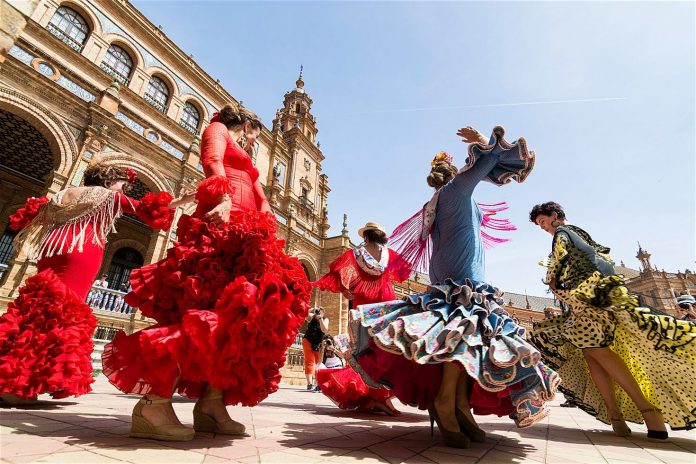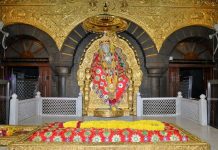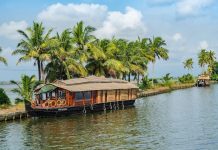A compact city that you can easily discover in two days, Seville yields its multiple treasures in an unhurried way, with minimal planning necessary. Find out how to take in Moorish architecture, fast-paced flamenco, and creative tapas as you spend a perfect weekend in Seville.
 Taking in the view of Seville from the Metropol Parasol
Taking in the view of Seville from the Metropol Parasol
Friday
Afternoon/evening
Start off by exploring the charming lanes of Barrio Santa Cruz, the old Jewish neighbourhood – this is quintessential Seville, with tiled benches, orange trees and narrow alleyways.
Then head towards the Torre del Oro: this 13th-century Moorish tower in the old port is now a naval museum where you can learn about the city’s maritime heritage (kids will love the model ships). All ships departed and arrived here on their voyages to and from the New World. Take your leave, and stroll along the Guadalquivir river in the evening sunshine.
Stop off for an ice-cold Cruzcampo beer and some tapas on the terrace of Mercado Lonja del Barranco: at this gourmet market in an elegant Eiffel-designed building, feast on jamón ibérico, bull’s tail croquettes, and black squid ink salmorejo (a chilled soup). Next, cross Triana bridge to the down-to-earth gypsy quarter, and continue your riverside route to Torre Sevilla hotel. If you’re lucky, you’ll be whisked up to the 37th-floor panoramic terrace for a drink (be aware that sometimes it’s closed for private events). The glass-walled bar atop Andalucía’s tallest building has predictably steep prices (€6 for a glass of wine), but they’re worth it – you won’t get this mesmerising 360-degree view anywhere else.
Plan B: follow the river down to lively Triana bar El Embarcadero, with nautical-themed blue walls and canvas seats, featuring a well-heeled crowd.
 Inside an ornate Real Alcázar courtyard
Inside an ornate Real Alcázar courtyard
Saturday
Morning
If it’s your first visit to Seville, then start off at the Real Alcázar, Seville’s fabled Moorish-Gothic-Mudéjar-Renaissance palace – ideally, book the earliest time slot to beat the crowds. Gaze in wonder at the bougainvillea-filled gardens, regal pavilions and cool tiled halls, as featured in Game of Thrones, and take a mid-morning refresher in the palace’s garden cafe, parlaying with the resident peacocks.
Then wander up to Calle Sierpes, admiring the astonishing array of fan and shoe shops, to Metropol Parasol. Resembling six giant fungi – it’s known locally as Las Setas (the Mushrooms) – this is the largest wooden structure in the world. Get the lift to the top and follow the undulating walkway for expansive views over the city’s rooftops, looking out for the panels explaining what’s where on the skyline.
 Flamenco dancers at the Plaza de España
Flamenco dancers at the Plaza de España
Afternoon
Tucked away on a nearby back street is Zalata – expect a warm welcome from the restaurant’s Moroccan and Peruvian owners, whose innovative menu encompasses ceviche, lamb with couscous, and sardine burgers.
From here, a short hop brings you to Palacio de Las Dueñas, home of the late Duquesa de Alba. Devoted to the city (she had houses all over Spain, but this was her favourite), this eccentric aristocrat adored flamenco, Semana Santa (Holy Week) and Betis football club; you can peruse her personal mementos, as well as gaze at Renaissance paintings and 16th-century Flemish tapestries. Wander among the garden’s lemon trees that were once inspiration for Antonio Machado, one of Seville’s most famous poets.
Evening
Catch the early flamenco show at Casa de la Memoria – the dancers’ intricate, lightning-fast footwork will leave you breathless; the small exhibition upstairs explaining the gypsy music and dance form is worth a look too. Afterwards walk up to the Alameda de Hércules, and join the locals on their paseo (evening stroll) with children, grannies and dogs in tow. Take a front-row seat at one of El Disparate’s outdoor tables, and try the tomato, watermelon and grilled sardine salad or the prawn and mushroom ravioli. Carry on the boho vibe upstairs at their roof terrace bar, with cool tunes and a negroni.
 Seville’s famous Cathedral with its Giralda bell tower
Seville’s famous Cathedral with its Giralda bell tower
Sunday
Morning
Kick off day two at Seville’s must-see Catedral – if you haven’t booked tickets, buy yours at El Salvador and skip the queue. The basilica’s colossal scale is awe-inspiring (this is the largest Gothic cathedral in the world), with soaring ceilings and endless astonishing artworks. If you’re in a rush, use the kids’ audio guide (it’s shorter and not dumbed down). Unmissable are Christopher Columbus’ elaborate tomb, held aloft by four knights, and ascending the Giralda, the celebrated bell tower that was formerly a minaret.
Pass through the old city wall’s – Postigo del Aceite (Oil Gate) – to the Arenal district, stopping off at La Escalera del Colmaito delicatessen for local orange-flavoured biscuits and shrimp-infused oil, before crossing the river to Triana. Have you noticed the azulejos (ceramic tiles) around the city, depicting designs from Arabic geometric patterns to images of the Virgin Mary? These were all made in this neighbourhood at the Centro Cerámica Triana. In this former factory, learn about a centuries-old industry via Moorish kilns, 1950s advertisements, and interviews with trianeros who worked here.
 Sunset over the Triana bridge and the Guadalquivir river
Sunset over the Triana bridge and the Guadalquivir river
Afternoon
Pop round the corner to Alfarería 21, another converted tile factory, for tapas-with-a-modern-twist (think cod, lemon and honey fritters or chicken and sherry croquettes) beautifully matched with a glass of chilled fino (a light, dry sherry). Now it’s time to amble down to the Parque de María Luisa. The easy (read: lazy) way to explore the park? Hire a chic electric bicycle from Oh My Bikes; if you want to work off your lunch, then row a boat around Plaza de España’s majestic canal, spanned by four brick bridges with ceramic-tiled balustrades.
Where to stay
Bang in the centre – at the intersection of two pedestrianised streets, so there’s no traffic noise, and with shops, restaurants and monuments nearby – the Alminar has cosy, stylish, well-priced rooms. Splash out extra for a corner room – lighter, and with a Giralda view.
A converted 19th-century mansion with a luxurious vibe – gold headboards, damask bedspreads and chandeliers – Hotel Casa 1800 is perfectly placed for visiting both the cathedral and Alcázar. Two deal-closers are a rooftop pool looking onto the iconic former minaret, and a free afternoon buffet for refuelling after a day out.




